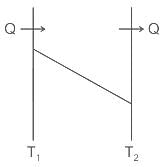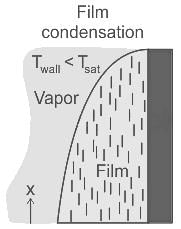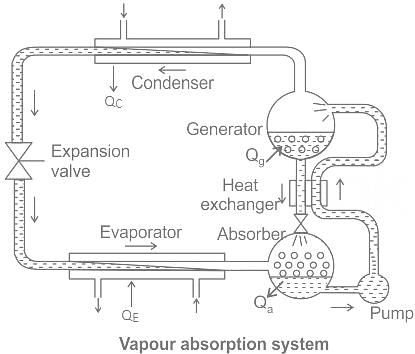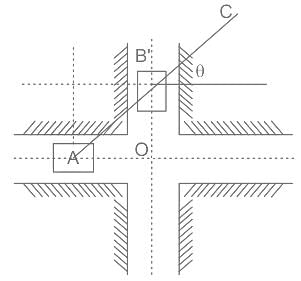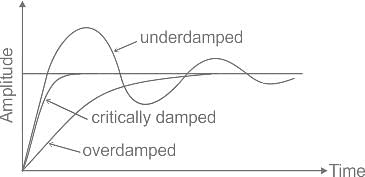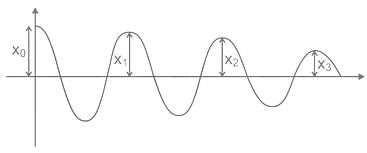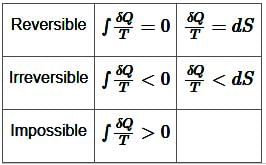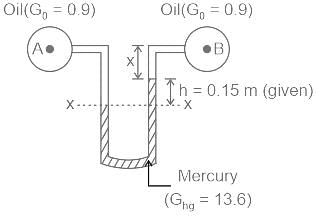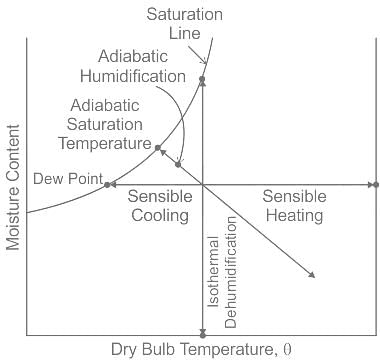ESE (ME) Paper II Mock Test - 5 - Mechanical Engineering MCQ
30 Questions MCQ Test Mock Test Series for IES/ESE (ME) - ESE (ME) Paper II Mock Test - 5
For an ideal gas, a constant pressure line and a constant volume line intersect at a point, in the Temperature (T) versus specific entropy (S) diagram. Cp is the specific heat at constant pressure and Cv is the specific heat at constant volume. The ratio of the slopes of the constant pressure and constant volume lines at the point of intersection is
Which of the following is an effect of superheating in Rankine cycle?
1. Mean temperature of heat addition increases
2. Cycle efficiency increases
3. Heat addition increases
4. Heat rate decreases
1. Mean temperature of heat addition increases
2. Cycle efficiency increases
3. Heat addition increases
4. Heat rate decreases
If a refrigerator and heat pump operate between the same temperature limits, then the difference between the COP of heat pump and refrigerator is:
Statement (I): Property is a path function and it is independent of the end points in the cycle.
Statement (II): In a cycle change in the property is equal to zero
Two pipe lines of equal length and diameters of 10 cm and 40 cm are connected in parallel between two reservoirs. If friction factor f is same for both the pipes, the ratio of the discharges in the larger to the smaller pipe is
Steady heat transfer takes place through a plane will in the outward direction at the rate of 1500 W. The inner surface temperature of the wall is 27°C. The entropy generation is 0.25 W/K. The outer surface temperature of the wall is
For heat transfer across a composite slab with materials having different thermal conductivity, study the
following statements.
I. Temperature is continuous always.
II. The temperature gradient is not continuous.
III. Heat flow is not continuous.
Consider the following statements:
1) In pool boiling, liquid motion near the surface is due to free convection and the mixing induced by
bubble growth and detachment
2) The film condensation occurs when a vapor free from impurities condenses on the clean and
uncontaminated surface.
3) The evaporation at the solid-liquid surface is termed as boiling.
4) In saturated boiling, the temperature of the liquid lies below the saturation temperature.
Which of the above statements are true?
Neglecting the pump work, Energy equation for vapor absorption refrigeration system may be written as [where, Q = heat transfer rate into the system]
In an elliptic trammel, the length of the link connecting the two sliders is 100 mm. The tracing pen is placed on the 150 mm extension of this link. The major and minor axis of the ellipse traced by the mechanism would be
Which of the following statements are TRUE for damped vibrations?
P. For a system having critical damping, the value of the damping ratio is unity and the system does not undergo a
vibratory motion.
Q. Logarithmic decrement method is used to determine the amount of damping in a physical system.
R. In case of damping due to dry friction between moving surfaces resisting force of constant magnitude acts opposite
to the relative motion.
S. For the case of viscous damping, drag force is directly proportional to the square of relative velocity.
Consider the following statements:
1. The energy-absorbing capacity of the threaded portion is higher than that of the shank of a bolt.
2. Tensile and shear stresses are induced in bolts without preloading.
3. In an eccentric loaded bolted joint in shear, the bolt closer to the applied load is worst loaded.
Which of the above statement(s) is/are correct?
Which one of the following pairs of equations describes an irreversible heat engine ?
A fire engines raises water at the rate of 6000 litres per minute through a height of 2 m and discharges it at 10 m/s. The H.P of fire engine is nearly equal to (Take acceleration due to gravity as 9⋅81 m/s2)
A pipe contains an oil of specific gravity 0⋅9. A differential manometer connected at the two points A and B shows a difference in mercury level as 15 cm. What is the difference of pressure at the two points?
(Take acceleration due to gravity as 9⋅81 m/s2, specific gravity of mercury as 13⋅6 and density of water as 1000 kg/m3)
Which of the following are highly explosive and flammable in a refrigeration system?
1. Methane
2. Butane
3. R134a
Select the correct answer using the code given below:
A Kaplan turbine plant develops 2000 kW under a head of 8 m while running at 100 rpm. The discharge is 250 m3/s. The tip diameter of the runner is 6.5 m and the hub to tip ratio is 0.43. What is the flow ratio based on tip speed? (Take acceleration due to gravity as 9⋅81 m/s2)
Statement (I): The stepper motor is a device that produces rotation through equal angles, the so-called steps, for each digital pulse supplied to its input.
Statement (II): Stepper motors can be used to give controlled rotational steps but cannot give continuous rotation, as a result their applications are limited to step angles only
A 120 mm diameter jet of water is discharging form a nozzle into the air at a velocity of 40 m/s. The power in the jet with respect to a datum at the jet will be
Which of the following characteristics regarding fluid kinematics is/are correct?
1. Streamline represents an imaginary curve in the flow field so that the tangent to the curve at any point represents the direction of instantaneous velocity at that point.
2. Path lines, streamlines and streak lines are identical in steady flow.
Which one of the following valves is provided for starting the engine manually, during cold weather conditions?
The phenomenon that enables cooling towers to cool water to a temperature below the dry bulb temperature of air is termed as
The linear relationship between stress and strain for a bar in simple tension or compression is expressed with standard notations by the equation
A unidirectional fibre-epoxy composite contains 65% by volume fibre and 35% epoxy resin. If the relative density of the fibre is 1.48 and of the resin is 1.2, the percentage weight of fibre will be nearly
Consider the following statements for analysis of steam cycles:
1. A steam power plant continuously converts the energy stored in fossil fuels or fissile fuels into shaft work.
2. Steam power plants work on Brayton cycle.
3. In supercritical steam cycle, steam is generated in a 'once-through' boiler at a pressure above the critical point of 27.5 bar.
4. Deaerator is used for the purpose of deaerating the feedwater.
Which of the above statements are correct?
A single-acting reciprocating pump, running at 50 rpm delivers 0.00736 m3/s of water. The diameter of the piston is 200 mm and stroke length is 300 mm. What is the percentage slip of the pump?
How much of concrete with γ = 25 kN/m3 must be attached to a beam having a volume of 0.1 m3 and specific gravity 0.6 to cause both to sink in water? (Take g = 9.81 m/s2)
Copper has the FCC crystal structure and a unit cell with a lattice constant of 0.361 nm. What is the interplanar spacing ‘d220’ ?


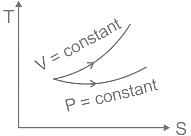


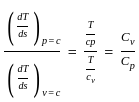
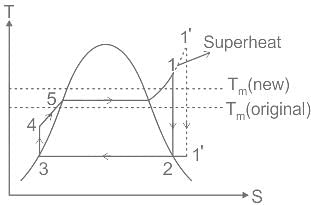







 ⇒
⇒ 


